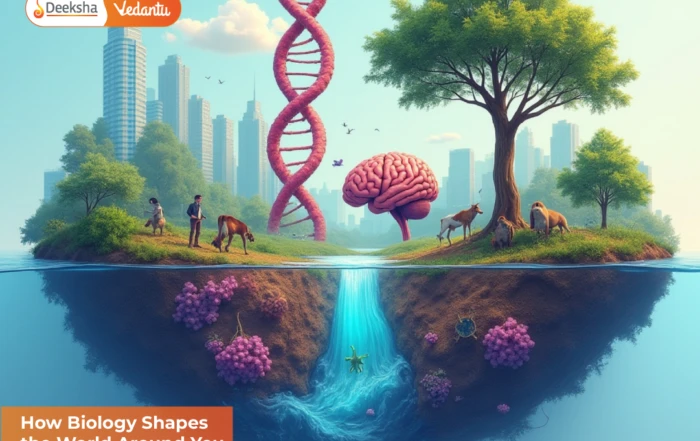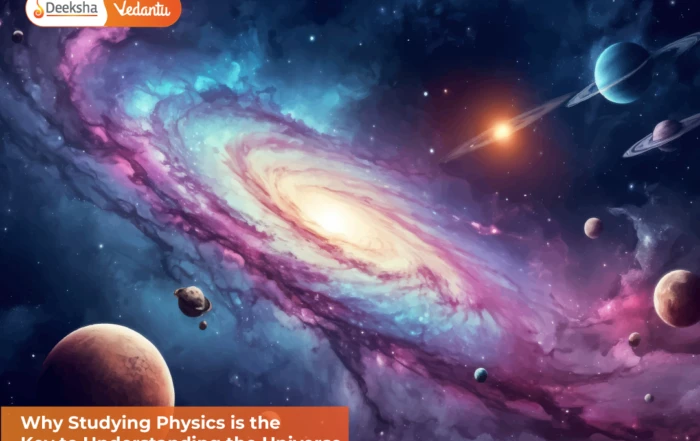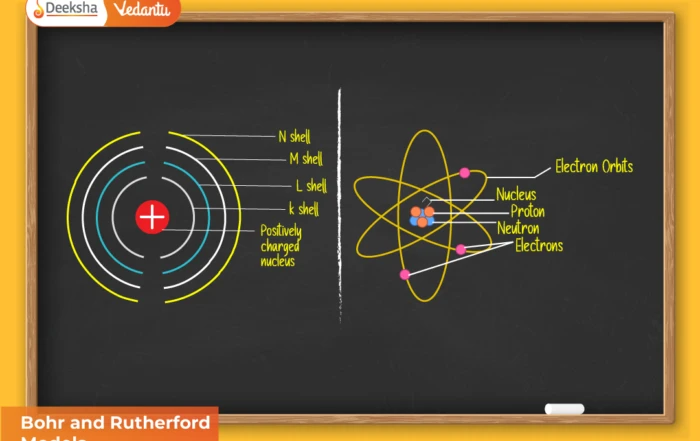
Introduction
The structure of the atom has fascinated scientists for centuries. Over time, as experimental evidence accumulated, different models of the atom emerged, each improving upon the previous one. From J.J. Thomson’s early discovery of electrons to Schrödinger’s wave mechanics, the evolution of atomic theory reflects how science advances through hypothesis, observation, and refinement. This unit explores all major atomic models—their assumptions, experiments, limitations, and contributions—especially from a JEE and NEET perspective.
Thomson’s Model of Atom
In 1898, J.J. Thomson, following his discovery of the electron, proposed one of the earliest atomic models. According to Thomson, an atom was a uniform sphere of positive charge with negatively charged electrons embedded within it—much like plums in a pudding or seeds in a watermelon. The positive charge balanced the negative electrons, keeping the atom electrically neutral.
Key Features
- The atom is a positively charged sphere.
- Electrons are uniformly distributed inside it.
- The atom as a whole is neutral.
Limitations
Thomson’s model could not explain atomic stability or the emission and absorption of light by atoms. It lacked an explanation for atomic spectra and could not describe how electrons were arranged or moved. Still, it was the first to acknowledge subatomic particles, laying a foundation for future discoveries.
JEE Focus Point
Understand the concept of charge neutrality and recall how Thomson’s model introduced electrons for the first time in atomic theory.
Rutherford’s Model of Atom
In 1911, Ernest Rutherford conducted the famous Gold Foil Experiment, where he bombarded thin gold foil with alpha (α) particles. Most particles passed through, but some deflected at large angles. This led him to propose that the atom consists of a tiny, dense, positively charged nucleus at its center, around which electrons revolve in circular paths.
Major Postulates
- The atom has a small, dense, positively charged nucleus.
- Electrons revolve around the nucleus in well-defined orbits.
- Most of the atom is empty space.
Significance
Rutherford’s experiment fundamentally altered our understanding of the atom, proving the existence of the nucleus. However, his model faced a major issue—it could not explain why orbiting electrons, losing energy continuously, did not spiral into the nucleus.
JEE & NEET Tip
Be able to interpret Rutherford’s scattering experiment, calculate impact parameters, and understand the reasoning behind the existence of the nucleus.
Drawbacks of Rutherford’s Model
While groundbreaking, Rutherford’s model had serious limitations according to classical physics:
- Accelerating electrons should emit electromagnetic radiation.
- Continuous energy loss would make electrons collapse into the nucleus.
- Atoms, therefore, should be unstable—contradicting experimental evidence.
- The model failed to explain the line spectra of hydrogen and other gases.
In Summary
Rutherford’s discovery of the nucleus was revolutionary, but his model couldn’t describe atomic stability or quantized energy levels.
Bohr’s Model of Atom
In 1913, Niels Bohr improved Rutherford’s model by incorporating Planck’s quantum theory. He introduced the concept of quantized energy levels, where electrons move in fixed orbits without radiating energy. Energy is absorbed or emitted only when electrons transition between these levels.
Main Postulates
- Electrons revolve around the nucleus in fixed energy levels (quantized orbits).
- Each orbit has a definite energy value.
- Energy emission or absorption occurs when electrons jump between levels:
ΔE = E₂ – E₁ = hν - The angular momentum of an electron is quantized:
mvr = n(h/2π)
Achievements
- Explained the hydrogen emission spectrum.
- Introduced the concept of quantized orbits.
- Accounted for atomic stability and spectral lines.
Limitations
- Worked only for single-electron species like H, He⁺, Li²⁺.
- Failed for multi-electron atoms.
- Could not explain the fine structure and Zeeman effect.
JEE Formula Box
- Bohr’s radius (a₀): a₀ = 0.529 Å
- Energy of nth orbit: Eₙ = -13.6 (Z² / n²) eV
- Radius formula: rₙ = 0.529 × (n² / Z) Å
Limitations of Bohr’s Model
Bohr’s model was revolutionary but had shortcomings. It treated electrons as particles in circular orbits and ignored their wave-like behavior. It also couldn’t explain the Zeeman effect (splitting in magnetic fields) or Stark effect (splitting in electric fields).
Summary of Drawbacks
- Ignored wave-particle duality.
- Failed for multi-electron atoms.
- Could not explain electron spin or fine structure.
JEE Insight
Questions often test how Bohr’s quantization concept bridged classical and quantum physics. Be clear about its applicability limits.
Quantum Mechanical Model of Atom
Developed by Schrödinger, Heisenberg, and Dirac, the Quantum Mechanical Model redefined atomic structure. It replaced the idea of fixed electron orbits with probability clouds or orbitals, describing where an electron is most likely to be found.
Key Principles
- Based on Heisenberg’s Uncertainty Principle: It’s impossible to know both position and momentum of an electron precisely.
- Schrödinger’s Equation determines allowed energy states of electrons.
- Electrons exhibit wave-particle duality, existing as standing waves around the nucleus.
Advantages
- Accurately explains atomic spectra for all elements.
- Predicts chemical bonding and orbital shapes.
- Incorporates both wave and particle nature of matter.
JEE Focus
Know the difference between orbit and orbital, and understand quantum numbers (n, l, m, s) that define the size, shape, and orientation of orbitals.
JEE & NEET Focus Points
- Compare features of Thomson, Rutherford, Bohr, and Quantum models.
- Derive and apply Bohr’s formulas for energy and radius.
- Understand quantum numbers and orbital theory.
- Practice problems on energy transitions and spectral lines.
- Memorize constants like Rydberg constant (R = 1.097 × 10⁷ m⁻¹).
FAQs
Q1. Why was Thomson’s model called the “plum pudding” model?
Because Thomson imagined electrons as negatively charged “plums” embedded within a sphere of positive charge, just like plums in a pudding.
Q2. How did Rutherford’s experiment confirm the nucleus?
Sharp deflections of a few α-particles in his gold foil experiment indicated a dense, positively charged center—identified as the nucleus.
Q3. What makes Bohr’s model revolutionary?
Bohr quantized electron orbits, introducing energy levels that successfully explained the hydrogen spectrum and atomic stability.
Q4. How does the Quantum Mechanical Model differ from Bohr’s model?
While Bohr treated electrons as particles in fixed orbits, the quantum model views them as waves existing in orbitals described by probability distributions.
Q5. Which atomic model is most accepted today?
The Quantum Mechanical Model is universally accepted as it aligns with experimental data, explaining chemical bonding, spectra, and electron configurations.
Conclusion
The journey from Thomson’s to Schrödinger’s model showcases the gradual refinement of atomic theory. Each model built upon the last, correcting its flaws and deepening our understanding of matter. For JEE and NEET aspirants, mastering these concepts is crucial—not just for exams but for developing a scientific mindset. The Quantum Mechanical Model remains the most comprehensive and accurate representation of atomic structure, integrating wave mechanics and probability to describe how electrons truly behave within atoms.











Get Social